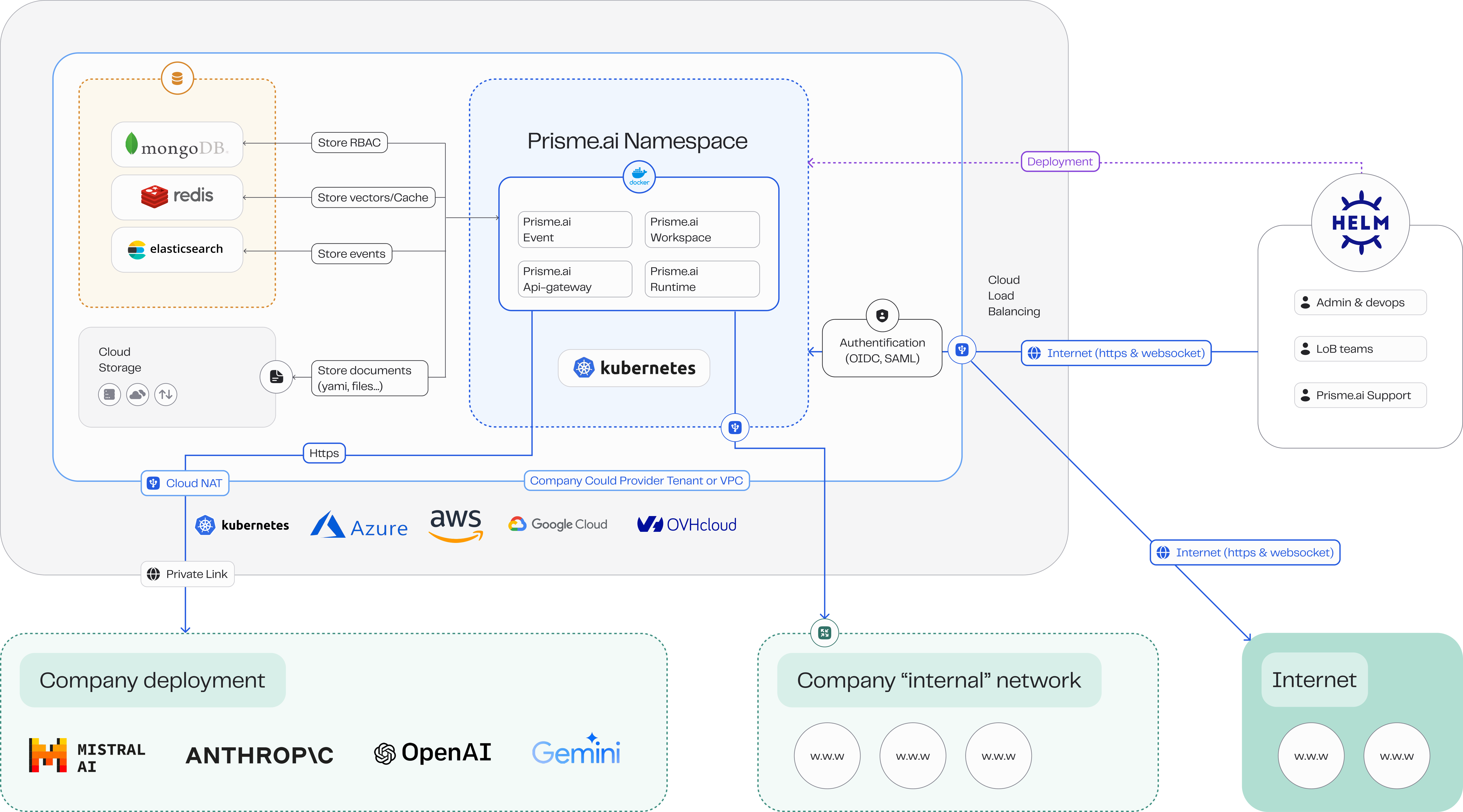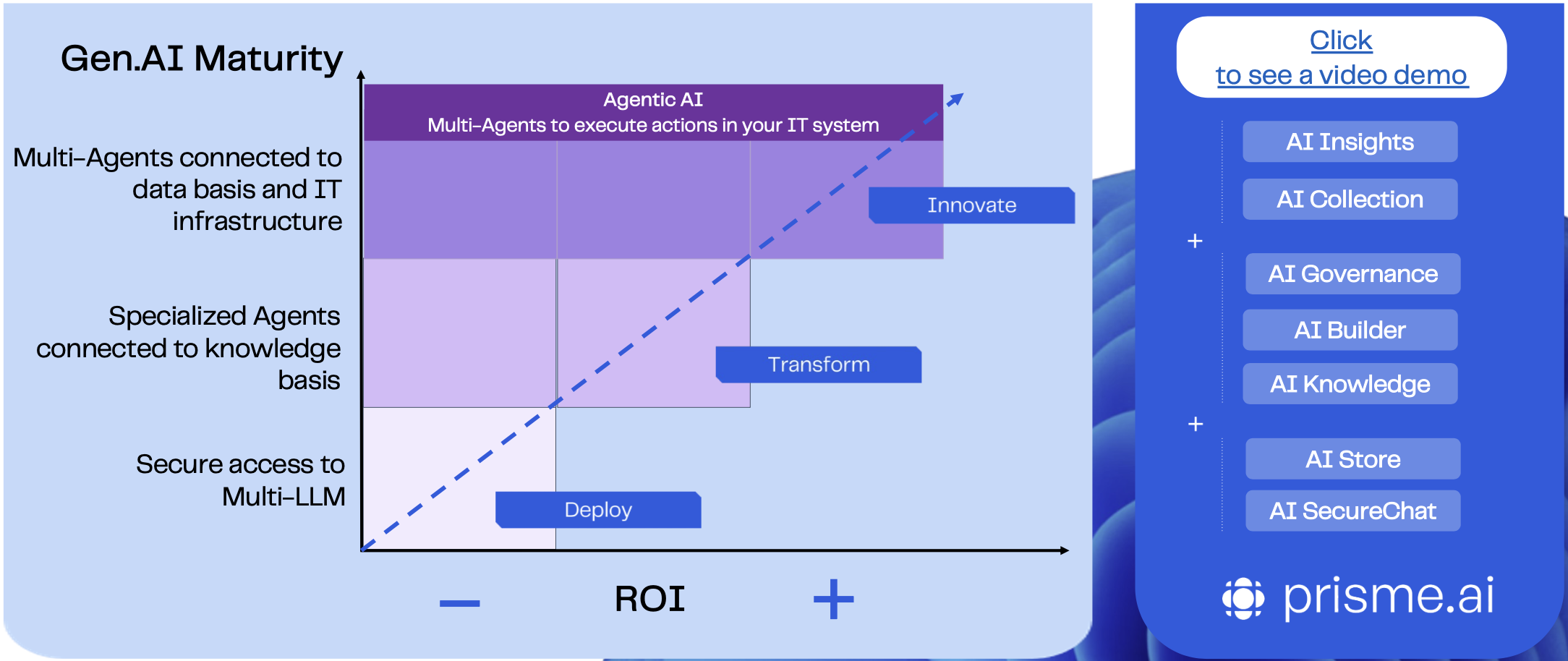Three-Tier Architecture
Prisme.ai follows a three-tier architecture that provides flexibility, scalability, and interoperability:
1. Cloud & Infrastructure Layer
- Supports major cloud providers (GCP, AWS, Azure, OpenShift)
- Provides the foundation for deploying and running Prisme.ai services
- Ensures security, scalability, and reliability
2. Language Models Layer
- Integrates with multiple LLM providers including:
- OpenAI (GPT-4, GPT-3.5)
- AWS Bedrock
- Google Vertex AI
- Mistral AI
- Open-source models (self-hosted or cloud)
- Manages model selection, optimization, and fallback strategies
- Handles multimodal capabilities where supported
3. Gen.AI Platform Layer (AI Products & AI Builder)
- Provides user-facing products and development tools
- Implements RAG, agentic workflows, and advanced integrations
- Enables no-code, low-code, and full-code development paths
Core Platform Capabilities
Cloud Agnostic
Runs on any major cloud platform or on-premises infrastructure
LLM Agnostic
Works with multiple language models from different providers
Enterprise Security
Enterprise-grade security with SSO, RBAC, and privacy by design
Event-Driven Architecture
Modern event-driven approach for scalable, responsive applications
Microservices Oriented
Modular architecture for flexibility and independent scaling
Cloud Native
Built for Kubernetes, Docker, and modern cloud environments
Gen.AI Maturity Model
Prisme.ai supports organizations at all stages of their Gen.AI journey:
- Deploy: Secure multi-LLM and multimodal access
- Transform: Specialized agents connected to knowledge bases
- Innovate: Multi-agent systems connected to databases and IT infrastructure